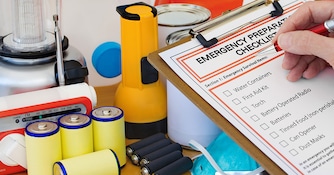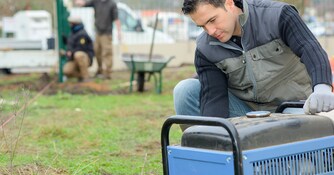
Hurricane Boat Preparation Guide
Hurricanes have been the scourge of us skippers since we first set sail, ravaging many a ship through the millennia. How can we make sure our precious vessel doesn't join the graveyard of wrecks on the bottom of the sea?
There are different ways we can prepare our boats for a hurricane, and none of them include sitting inside and "riding it out." That being said, we need to make the right preparations as early as possible beforehand to maximize the chances of your dinghy, sailboat, cruiser-what have you-surviving.
The Threat of Hurricanes
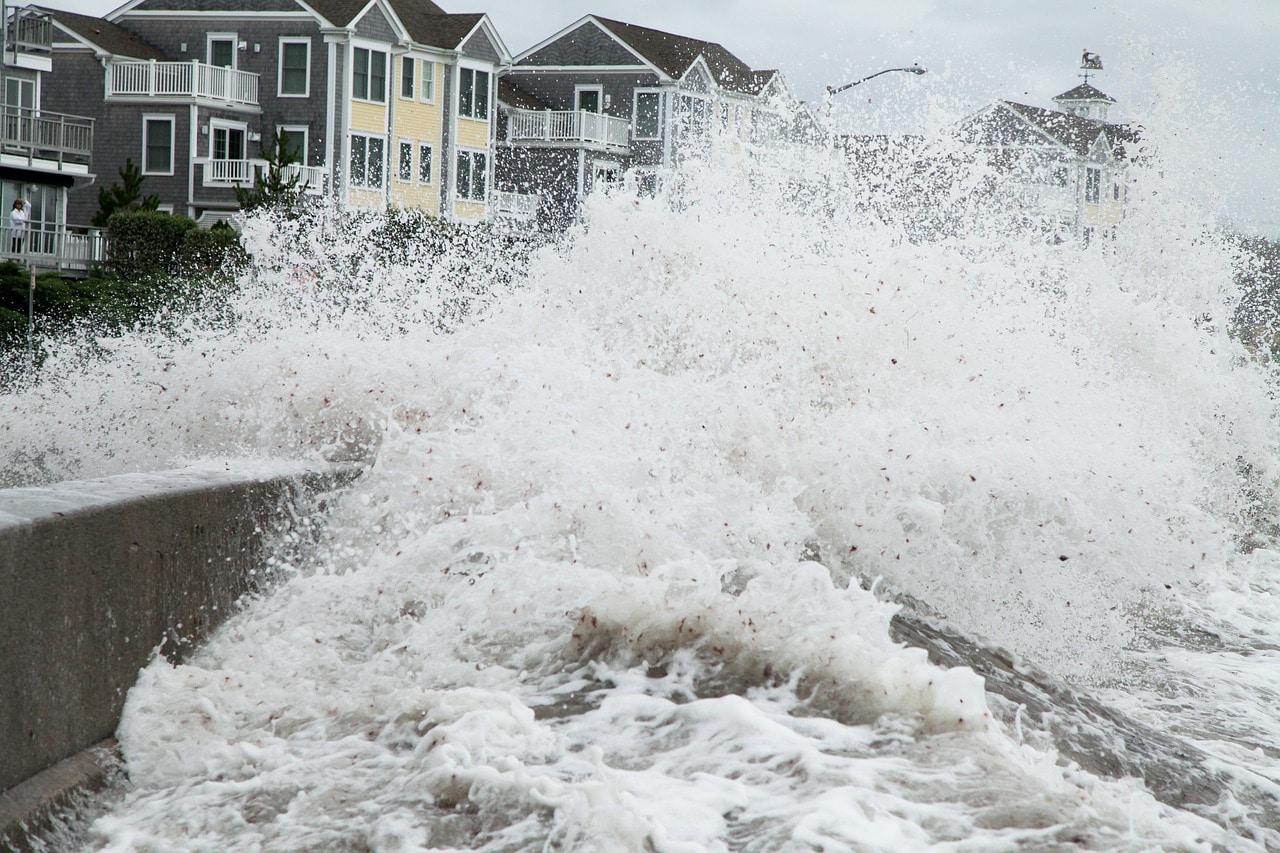 Hurricanes mean business. The vicious storms can produce wind speeds anywhere from 70 to more than 200 mph, and rainfall totals can significantly exceed 12 inches in 24 hours.
Hurricanes mean business. The vicious storms can produce wind speeds anywhere from 70 to more than 200 mph, and rainfall totals can significantly exceed 12 inches in 24 hours.
The storm surge is the most devastating element, especially for boats docked at marinas or stored on low ground. In 2012, Hurricane Sandy created a storm surge of 14 feet in certain areas of New York, which is about the height of a one-story house.
Unsecured boats don't stand any chance against these powerful forces. Even secured ones are at risk. There are no guarantees that your boat will survive short of you completely removing it from the storm zone, but the following tips will maximize its chances.
How Do You Secure a Boat During a Hurricane?
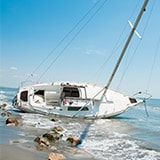 First things first. Boatowners need to doublecheck that their boat insurance policy is current. Make sure it covers not only damage but also transportation costs you would incur if moving the boat inland. Read the fine print under clear skies so you don't panic when storm clouds roll in.
First things first. Boatowners need to doublecheck that their boat insurance policy is current. Make sure it covers not only damage but also transportation costs you would incur if moving the boat inland. Read the fine print under clear skies so you don't panic when storm clouds roll in.
Next, every sensible skipper should also be an amateur meteorologist. No, you don't have to work for NOAA, but you should have a basic understanding of weather. In addition, tracking forecasts on the National Hurricane Center and the National Weather service will help you determine possible threats.
At the very least, understand the difference between a Hurricane Watch and a Hurricane Warning. With a Hurricane Watch, sustained winds of 64 knots/74 mph are possible. With a Hurricane Warning, they are expected. Give yourself enough time by preparing your boat during or, ideally, before a Hurricane Watch is issued.
Finally, know your boat and home hurricane plan. That plan will vary depending on how much advanced notice you get, how far you are from your boat, local traffic conditions, etc.
Land Ho! Hauling and Storing Your Boat on Land
The National Oceanic and Atmospheric Administration (NOAA) recommends pulling and storing your boat on high, dry land before a hurricane hits. The best-case scenario is to transport it completely out of the storm zone, or at least far away from the primary point of impact.
To effectively store your boat ashore, you will need:
- A trailer to haul your boat away from the marina/dock
- Boat lift cradles and jack stands to keep your vessel upright ashore
- Wooden bricks
- Quarter-inch chain
- Multiple rope straps to keep the boat stable
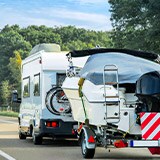 Some marinas will haul your boat away for you. Make sure you understand your marina's policies regarding hurricane prep and how much you will be responsible for.
Some marinas will haul your boat away for you. Make sure you understand your marina's policies regarding hurricane prep and how much you will be responsible for.
If you're on your own, hook your boat up to a trailer and haul it away. If you have a small boat, strongly consider storing it in your garage. If it comes between storing your boat and car in your garage, you may opt to pick your boat. A car will better withstand hurricane-force winds than a boat.
Drive larger boats to an open space without trees to prevent damage from falling branches, preferably on a hard, asphalt surface. Place wooden blocks around your trailer's wheels to prevent rolling.
Hoist your boat up on the jack stands (three or four on each side) and secure it with straps. Run a quarter-inch chain between the jack stands to prevent them from spreading apart during the storm. Position the vessel so that rainwater can easily drain.
In addition:
- Reduce windage by removing all loose gear such as sails, canvas covers, and bimini tops.
- Clear the decks of chairs, equipment, and anything that can blow away.
- Remove your outboard motor if applicable. Take it home for safe storage.
- Make your boat watertight by sealing any openings to the interior.
- Add protective covering to your rope straps to prevent chafing during the storm.
- Close valves leading to internal systems (engine, toilet, etc.)
- NEVER LEAVE THE BOAT ON. Shut off the electricity and remove the battery.
Again, there are no guarantees, but those steps will help protect your boat on land.
Boat Lifts
One place you absolutely don't want to secure your vessel during a hurricane is on a boat lift. In past hurricanes, damage to boats on lifts has been high and widespread. Store your boat ashore instead.
If it's crunch time and you have absolutely no choice, remove the drain plug to let rainwater drain, strip the boat, and tie it securely to the lift.
Securing Your Boat on the Water
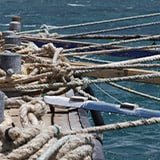 Sometimes, you don't have the option or time to haul your boat away and must secure it in the water before a hurricane strikes.
Sometimes, you don't have the option or time to haul your boat away and must secure it in the water before a hurricane strikes.
Your marina will likely have procedures in place for securing boats before a hurricane. Make sure you're up to speed. Storing your boat in a hurricane hole, which offers natural protection against storm surges, is usually the safest option because it minimizes fetch, which is the distance the water has to travel and gain strength. Canals are another great option because lines can be connected to both sides of the boat.
The main goal of securing your boat on the water is to run enough lines to pilings, cleats, buoys, anchors, etc., that will keep it suspended in one place.
Docks
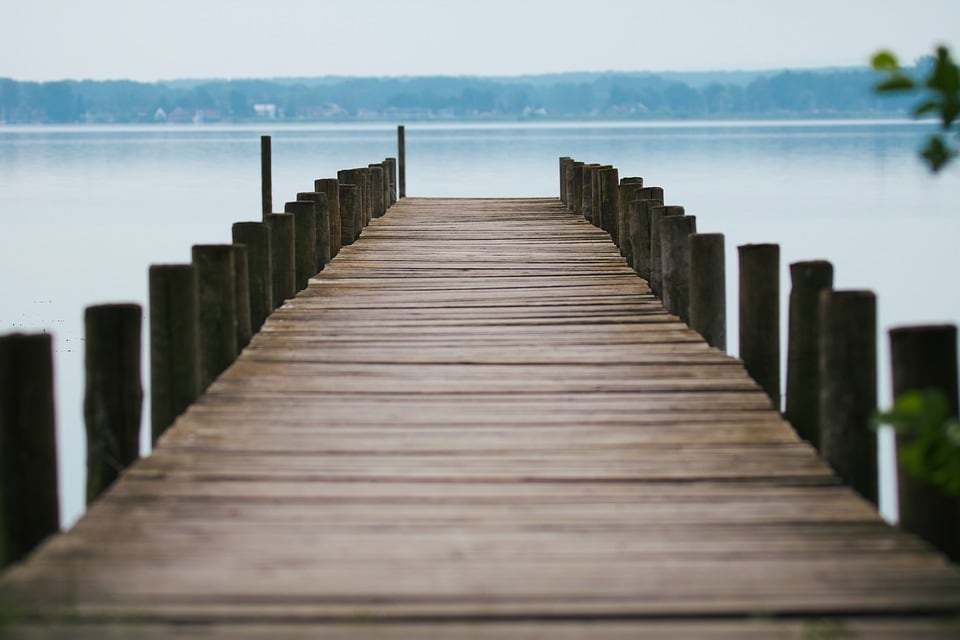 If you are tying your boat to a standard dock with pilings and/or cleats, use long lines (at least as long as the boat) to accommodate rising water levels and prevent snapping.
If you are tying your boat to a standard dock with pilings and/or cleats, use long lines (at least as long as the boat) to accommodate rising water levels and prevent snapping.
Reduce windage by positioning the boat's bow toward the anticipated wind direction as well as removing loose gear. Place multiple fenders on your boat to protect it against bumping the dock.
Protect the lines from chafing with old towels or rags (neoprene garden hoses work best). The more dock lines you use, and the larger web you create with them, the better chance your boat will have of surviving.
If your boat is tied to a floating dock, make sure the pilings are not only sturdy but higher than the projected storm surge to prevent the dock and boat from getting lifted and swept over them. Wooden pilings tend to perform better than concrete ones.
Anchoring in a Hurricane
Securing boats on moorings or anchoring is more difficult during a hurricane. Use multiple helix anchors, which will screw into the seabed. A study by the Massachusetts Institute of Technology found that a helix anchor could not be pulled out of the seabed even at 12,000 pounds of pull.
Anchors can also be useful if your dock lacks pilings. Use them to prevent the vessel from swaying and crashing into the dock. Always avoid anchoring in or around rocks. You want the anchor to embed itself in the seabed for maximum stability.
After the Hurricane
Don't try being a hero and going out before the hurricane has passed. Many marinas won't let you in until it's all over anyway.
Once it's safe, inspect the damage on your boat. Hopefully, if you secured it properly, the damage will be minimal (it probably won't be completely untouched). If it sustained major damage, take photos and file a claim with your insurance company.
Secure your boat from any further damage and begin drying it out. Pay closest attention to the engine or outboard motor. Be sure to flush any salt water and mud out with freshwater.
Nature is unpredictable. You can take all the precautions you want and still lose. Fortunately, we learn something new about protecting our boats after each hurricane and get better every time.
By using this knowledge, you will stand the best chance against any storm and prove that you're more than a skipper-you're a captain.
Outboard Navigation

Outboard Motor Expert

